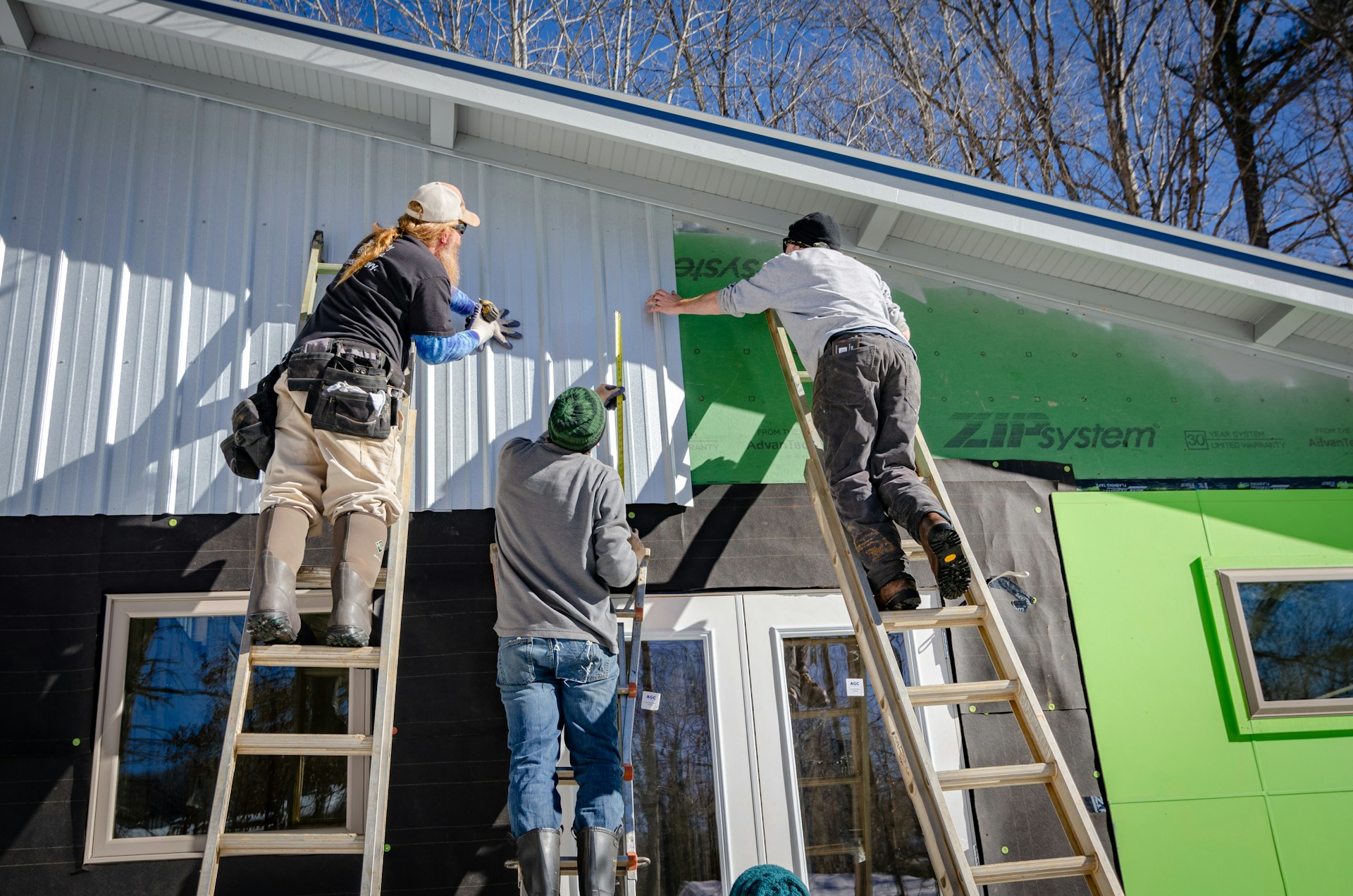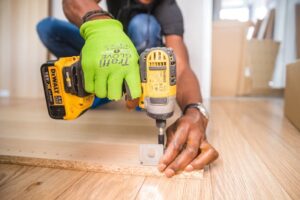
Building a custom home is a thrilling adventure. It allows you to create a living space tailored to your needs, preferences, and lifestyle. This guide will walk you through the essential steps to successfully planning your custom-built home, ensuring the process is smooth and enjoyable. By the end of this article, you’ll be equipped with valuable insights and practical tips to turn your dream home into a reality.
Understanding the Benefits of a Custom-Built Home
Choosing to build a custom home comes with countless benefits. It offers the opportunity to design a space that perfectly suits your lifestyle and personal tastes. Unlike pre-built homes, custom homes allow for complete control over every aspect of design and construction, from layout to finishes.
A custom-built home can also provide long-term financial benefits. By using energy-efficient materials and systems, you can reduce utility costs and increase the resale value of your property. Additionally, custom homes often require fewer renovations in the future since they are designed to meet your specific needs from the start.
Finally, the satisfaction and pride that come with living in a home designed just for you cannot be overstated. The personal touch and attention to detail will make your custom home uniquely yours, creating a space where you and your family can thrive.
Setting a Realistic Budget
Establishing a realistic budget is crucial when planning a custom-built home. Begin by determining how much you can afford to spend, taking into account your savings, income, and any loans you may need. Keep in mind that the cost of building a home can vary significantly depending on factors like location, size, and materials.
Once you have a general idea of your budget, it’s essential to allocate funds for different aspects of the project. This includes land acquisition, design fees, permits, construction, and landscaping. Setting aside a contingency fund for unexpected expenses is also a wise move, as it can help you stay on track financially if any surprises arise during construction.
Working with a financial advisor or mortgage broker can be helpful in creating a comprehensive budget plan. They can provide guidance on financing options and help ensure your budget is both realistic and manageable.
Selecting the Right Location
Choosing the perfect location for your custom home is a critical step in the planning process. The location can significantly impact your quality of life, as well as the home’s long-term value. When selecting a site, consider factors such as proximity to work, schools, and amenities, as well as the overall neighborhood feel.
It’s also essential to evaluate the site’s topography, soil conditions, and any potential environmental concerns. These factors can influence the cost and complexity of construction, so it’s crucial to conduct thorough research before making a decision.
Consulting with a real estate agent or land surveyor can provide valuable insights into the pros and cons of different locations. They can help you find a site that meets your needs and aligns with your budget and vision for your custom home.
Designing Your Dream Home
The design phase is one of the most exciting aspects of building a custom home. This is your chance to create a space that reflects your unique style and preferences. Start by making a list of must-have features and design elements, such as the number of bedrooms, bathrooms, and any special spaces like a home office or gym.
Working with an experienced architect or designer can help bring your vision to life. They can provide expert advice on layout, materials, and finishes, ensuring your home is both functional and aesthetically pleasing. Collaboration is key during this phase, as it allows you to refine your ideas and make informed decisions.
Consider factors like natural light, flow between spaces, and energy efficiency when designing your home. These elements can significantly impact your comfort and enjoyment of the space, so it’s essential to prioritize them in the design process.
Navigating the Permitting Process
Obtaining the necessary permits is a crucial step in the custom home-building process. Permits ensure that your construction project complies with local building codes and regulations, which are designed to protect your safety and the integrity of your home.
The permitting process can vary depending on your location, but it typically involves submitting detailed plans and specifications to your local building department. This may include site plans, architectural drawings, and engineering reports. It’s essential to familiarize yourself with the specific requirements in your area and work closely with your architect or builder to ensure all documentation is complete and accurate.
Patience is vital during the permitting process, as it can take several weeks or even months to obtain approval. However, securing the necessary permits is essential to avoid potential legal issues and ensure your project stays on track.
Finding the Right Builder
Selecting the right builder is one of the most critical decisions you’ll make when planning your custom home. A reputable, experienced builder can make the difference between a smooth, enjoyable building experience and a stressful one.
Start by researching builders in your area and asking for recommendations from friends, family, or industry professionals. Look for builders like Mighty Built Construction Co Inc., with a strong portfolio of custom homes and positive client testimonials. Once you’ve narrowed down your options, schedule interviews to discuss your project and gauge their level of expertise and communication style.
Don’t hesitate to ask for references and check them thoroughly. Visiting completed projects can also provide valuable insights into the builder’s craftsmanship and attention to detail. Ultimately, choose a builder who understands your vision, has a proven track record, and makes you feel confident in their ability to bring your dream home to life.
Managing the Construction Process
Once construction begins, staying organized and maintaining clear communication with your builder is essential. Regular site visits and progress meetings can help you stay informed and address any issues promptly.
It’s important to be flexible and prepared for potential delays or changes. Weather, material availability, and unforeseen challenges can all impact the construction timeline. Working closely with your builder and maintaining a positive attitude can help keep the project on track and ensure a successful outcome.
Documenting the construction process with photos and notes can also be helpful. This not only provides a record of progress but can also serve as a valuable reference for future maintenance and improvements.
Incorporating Sustainable Practices
Incorporating sustainable practices into your custom home can provide long-term benefits for both the environment and your wallet. Energy-efficient materials and systems can significantly reduce utility costs and minimize your home’s environmental impact.
Consider options like solar panels, energy-efficient windows, and insulation, as well as water-saving fixtures and appliances. These features can contribute to a more sustainable home while also enhancing its value and appeal.
Working with a builder experienced in green building practices can help ensure your home is as eco-friendly as possible. They can provide guidance on the best materials and technologies to achieve your sustainability goals.
Decorating Your Custom Home
Once construction is complete, it’s time to make your new house feel like home. Decorating your custom home is an exciting opportunity to express your personal style and create a comfortable, inviting space.
Start by choosing a cohesive color palette and selecting furniture and decor that complement the overall design. Mixing textures and materials can add depth and interest to your interiors, while thoughtful lighting can enhance the ambiance and functionality of each room.
Don’t forget to incorporate personal touches like family photos, artwork, and cherished items. These elements can make your custom home uniquely yours and create a warm, welcoming atmosphere.
Maintaining Your Custom Home
Proper maintenance is essential to preserving the beauty and functionality of your custom home. Regular upkeep can prevent costly repairs and ensure your home remains in excellent condition for years to come.
Create a maintenance schedule that includes tasks like cleaning gutters, inspecting the roof, and servicing HVAC systems. Seasonal maintenance, such as winterizing plumbing, sealing windows, or furnace repair from pros like Winters Heating & Cooling, can also protect your home from weather-related damage.
Investing in quality tools and equipment can make maintenance tasks more manageable. Additionally, working with trusted professionals for more complex tasks can ensure your home receives the care and attention it deserves.
Enjoying the Fruits of Your Labor
Building a custom home is a significant investment of time, effort, and resources. Once the process is complete, take the time to appreciate and enjoy the fruits of your labor.
Celebrate the successful completion of your project by hosting a gathering with friends and family. Share your experiences and the lessons you’ve learned along the way, and take pride in the beautiful, personalized space you’ve created.
Your custom home is a testament to your vision and determination. Enjoy the comfort and satisfaction that comes with living in a space designed just for you, and look forward to the many happy memories you’ll create there.
Taking the Next Steps
If you’re feeling inspired to start planning your custom home, now is the perfect time to take the next steps. Begin by researching architects, builders, and designers who can help bring your vision to life. Create a detailed budget and start exploring potential locations for your new home.
Remember, the key to a successful custom home project is careful planning, clear communication, and a commitment to your vision. By following the steps outlined in this guide, you’ll be well on your way to creating the home of your dreams.
For personalized assistance and expert guidance, consider booking a consultation with a custom home specialist. They can provide valuable insights and support throughout the planning and construction process, ensuring your project is a success from start to finish.


